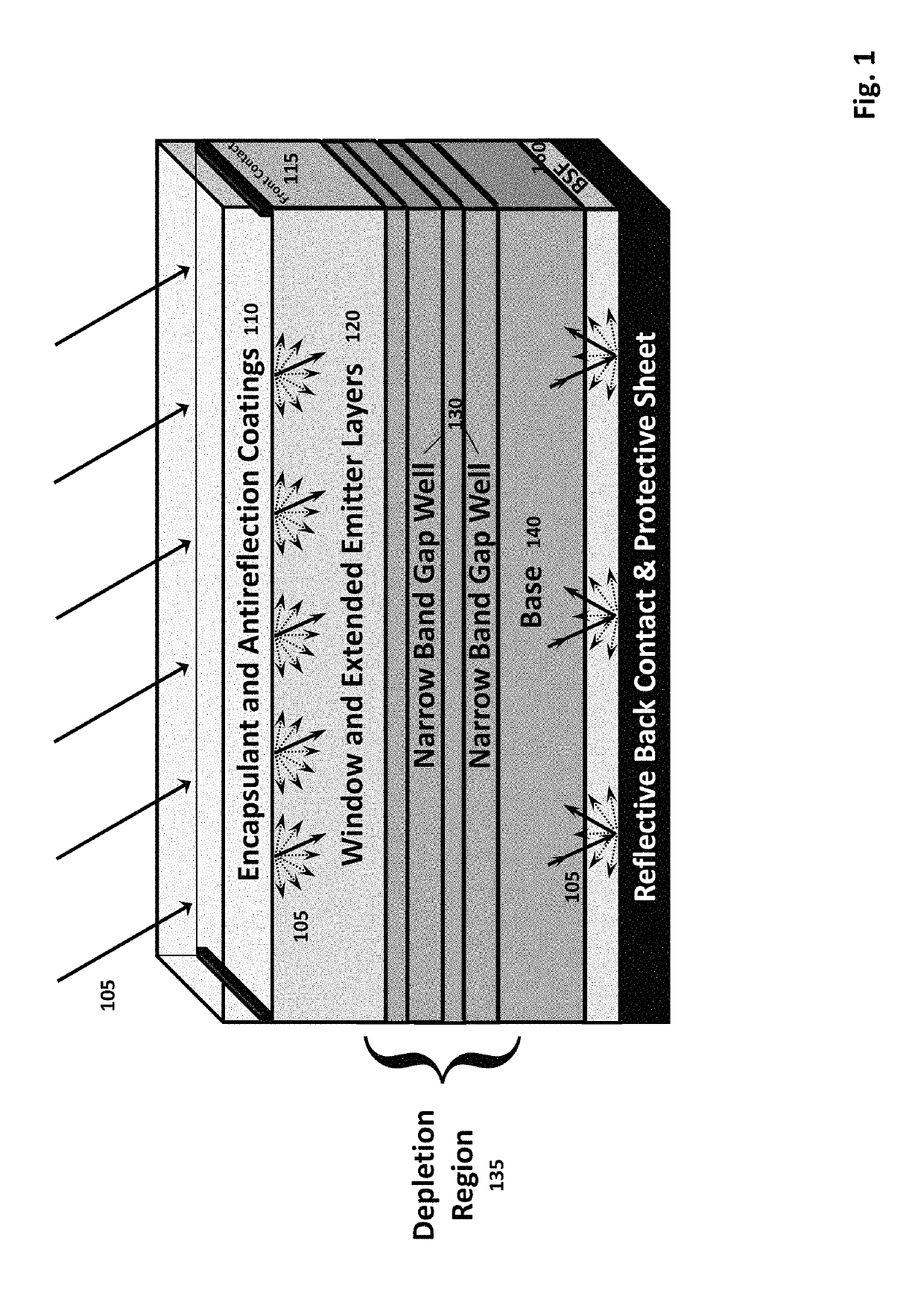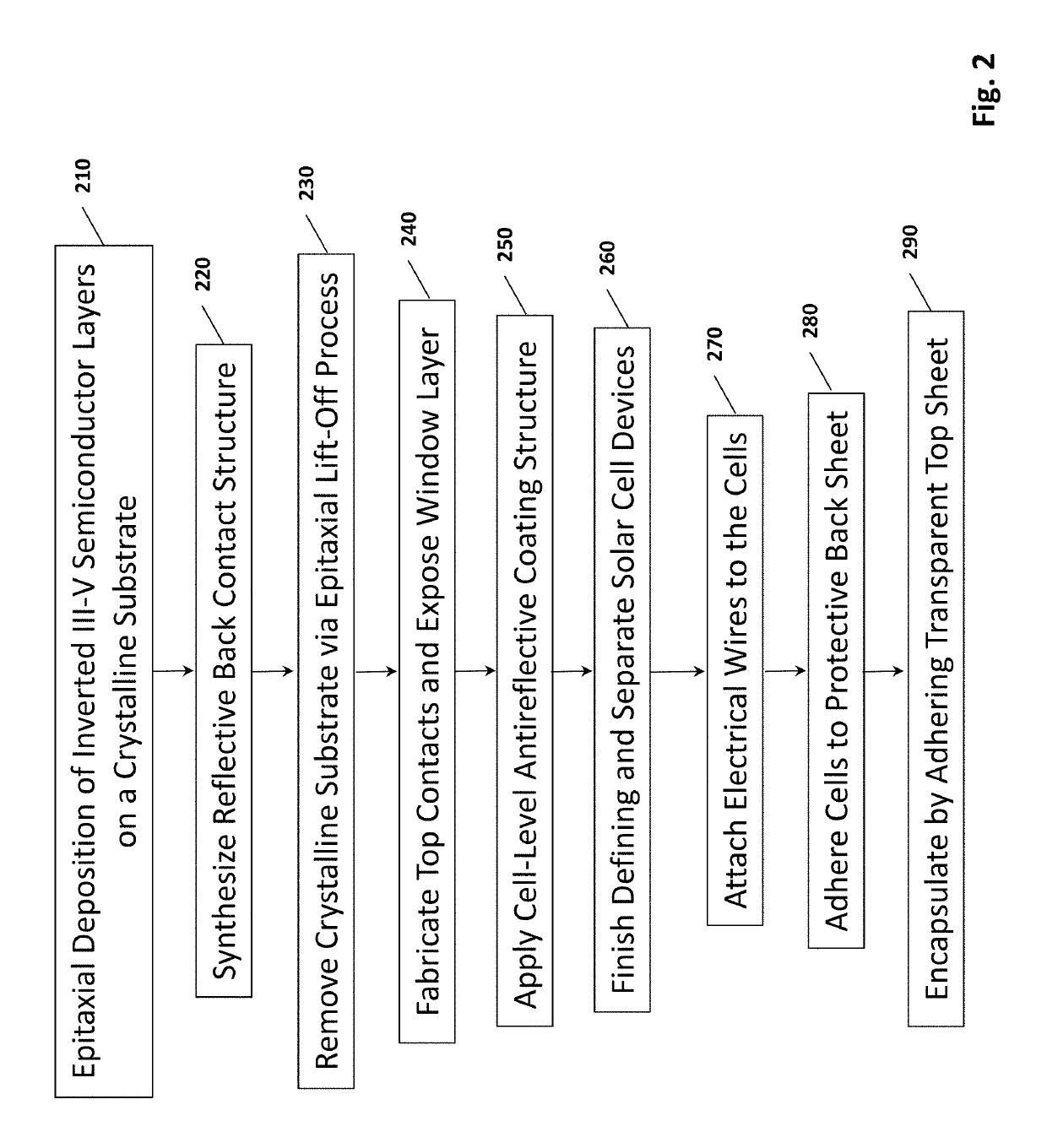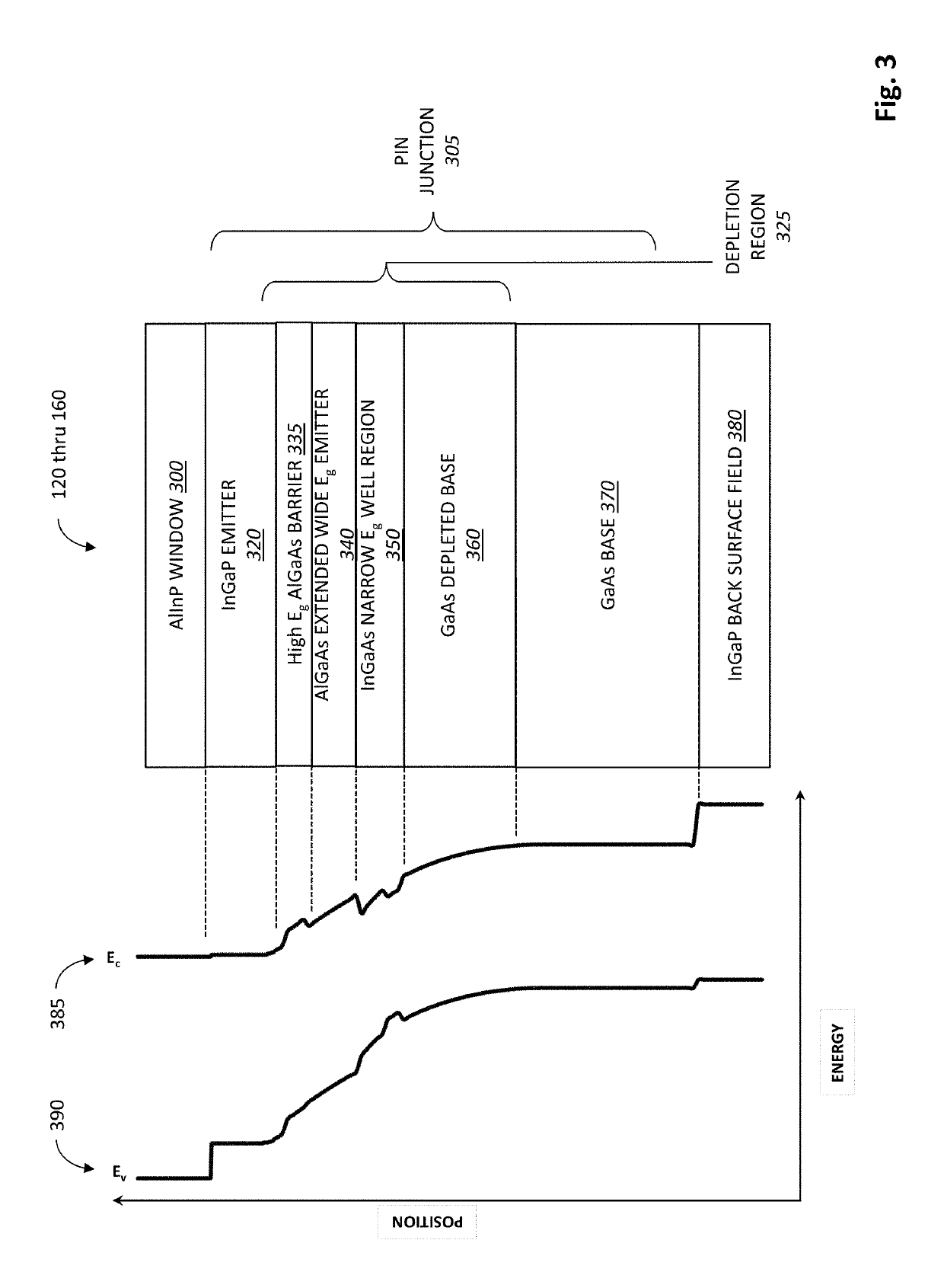Broadband photovoltaic sheets and method of constructing the same
a photovoltaic sheet and wideband technology, applied in the direction of semiconductor devices, basic electric elements, electrical equipment, etc., can solve the problems of reducing the conversion efficiency of pv power, reducing the voltage operation, and reducing the photon absorption and current generation of conventional nano-enhanced solar cells, so as to minimize the recombination of unwanted space charges, minimize the effect of radiative recombination and maximize current outpu
- Summary
- Abstract
- Description
- Claims
- Application Information
AI Technical Summary
Benefits of technology
Problems solved by technology
Method used
Image
Examples
Embodiment Construction
[0019]Embodiments of the invention are discussed below with reference to FIGS. 1-7. Those skilled in the art will readily appreciate that the detailed description given herein with respect to these figures is for explanatory purposes, however, because the invention extends beyond these limited embodiments.
[0020]FIG. 1 details a cross-sectional view of an illustrative embodiment of a flexible, broadband photovoltaic sheet that incorporates various nano-inspired features. Incident photons 105 strike the top surface of an anti-reflective encapsulant structure 110 and are then transmitted into an underlying semiconductor window and extended emitter layer structure 120. The semiconductor base layer 140 is comprised of material with an energy gap that is less than or equal to the semiconductor material used in the window and extended emitter layers. The unabsorbed incident light 105 and photons emitted from the base layer structure 140 then pass through the higher energy gap back surface ...
PUM
 Login to View More
Login to View More Abstract
Description
Claims
Application Information
 Login to View More
Login to View More - R&D
- Intellectual Property
- Life Sciences
- Materials
- Tech Scout
- Unparalleled Data Quality
- Higher Quality Content
- 60% Fewer Hallucinations
Browse by: Latest US Patents, China's latest patents, Technical Efficacy Thesaurus, Application Domain, Technology Topic, Popular Technical Reports.
© 2025 PatSnap. All rights reserved.Legal|Privacy policy|Modern Slavery Act Transparency Statement|Sitemap|About US| Contact US: help@patsnap.com



